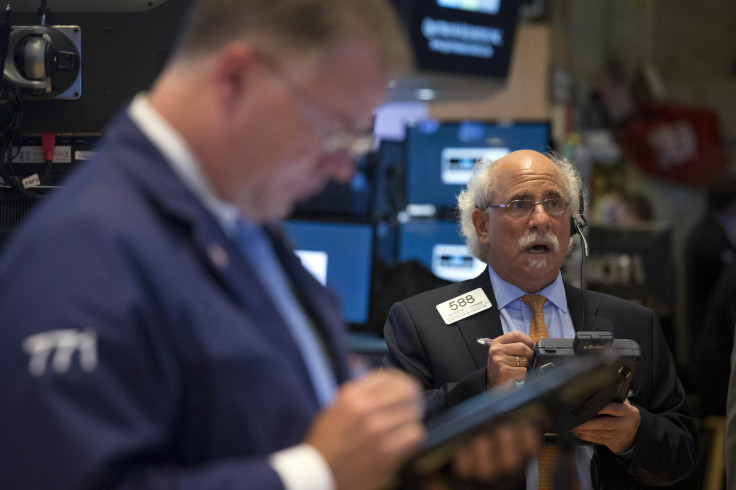Dow Jones Industrial Average Tumbles 200 Points After Yuan Extends Slide

UPDATE: 12 p.m. EDT
The Dow Jones Industrial Average hit a 2015 low in midday trading Wednesday, erasing gains for the year after the yuan extended losses against the U.S. dollar as concerns grow about global growth. China is an important source of world demand and the measures the country is taking is causing investors to question how weak the world’s second largest economy is.
Market professionals are also concerned whether there will be tepid demand from the country moving forward as China is the world’s largest consumer of commodities.
“It really calls into question global growth,” said Mike Baele, managing director at U.S. Bank Wealth Management in Portland, Oregon. “The impact from China could have negative implications across the globe for commodity producing economies.”
The Dow (INDEXDJX:.DJI) tumbled 250 points, or 1.3 percent, to 17,125.81. The Standard & Poor's 500 index (INDEXSP:.INX) lost 24.5 points, or 1.18 percent, to 2,052.09. And the Nasdaq composite (INDEXNASDAQ:.IXIC) dropped 65.46 points, or 1.29 percent, to 4,945.79.
For the year, the Dow has lost 646 points, or 3.6 percent, and the S&P 500 has lost 1 point, or 0.3 percent. However, the Nasdaq composite has added 232 points, or nearly 5 percent so far this year.
Original story: U.S. stocks extended losses Wednesday, with the Dow Jones Industrial Average plunging more than 200 points on global growth concerns. The market's slide coincides with China's depreciation of its currency Tuesday and Wednesday in an effort to revive the world's second-largest economy. With the declines, the Dow has traded in the red in nine of the last 10 trading sessions.
The Dow (INDEXDJX:.DJI) tumbled 207.01 points, or 1.19 percent, to 17,195.83. The Standard & Poor's 500 index (INDEXSP:.INX) lost 21.73 points, or 1.06 percent, to 2,061.96. And the Nasdaq composite (INDEXNASDAQ:.IXIC) dropped 56.84 points, or 1.12 percent, to 4,980.47.
The yuan dropped to 6.42 per U.S. dollar on Wednesday, its weakest level in four years. The People's Bank of China set the yuan fixing at 6.3306 against the dollar, 1.6 percent weaker than the prior day. China's central bank previously devalued its tightly controlled currency Tuesday as the People's Bank of China allowed the yuan to depreciate 1.9 percent against the dollar, marking the biggest one-day loss in the yuan since 2005.
The yuan selloff continued to weigh on global stocks, with China's Shanghai Composite index closing down 1 percent. European equities also traded lower as the pan-European Stoxx 600 declined more than 2 percent at the open.
The devaluation will make Chinese-made goods less expensive in global markets, and imports to China more expensive, which investors fear could have negative implications for U.S. multinationals -- and the U.S. economy.
The yuan’s devaluation may ease concerns about deflation in China, but the stronger dollar could restrain U.S. inflation during a time when the Federal Reserve would like it to accelerate. Most economists expected the Fed to announce its first interest rate hike in nearly a decade in September, but muted inflation could dampen the prospects for a rate hike this year.
Commodity prices also extended losses this week, with U.S. oil prices falling Tuesday to the lowest close since March 2009. China is the world’s largest consumer of commodities, and a weaker yuan means that U.S. dollar-denominated commodities will be more expensive in local currency terms for Chinese buyers.
“We still expect China’s commodities demand to pick up in tandem with industrial activity and exports later in the year,” Caroline Bain, senior commodities economist at Capital Economics, said in a research note Wednesday.
All 10 S&P 500 sectors traded lower, led by a 2 percent decline in telecommunications.
Nearly all 30 stocks on the Dow traded lower, led by iPhone maker Apple Inc. (NASDAQ:AAPL), which sank 2.5 percent. Energy giant Chevron Corporation (NYSE:CVX) was the only gainer, up just 0.2 percent.
© Copyright IBTimes 2024. All rights reserved.






















